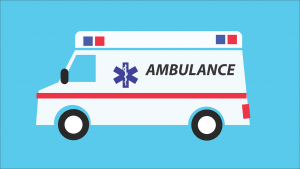Health insurance plans need to be renewed every year. In some cases, your policy will automatically renew, but there are times when you will have to renew it on your own by speaking with your health insurance company. If you’re in this situation, and you fail to renew your health insurance policy before it expires, your insurer will usually give you more time, or a grace period, so that you can renew your plan. But once this grace period passes, your health insurance will be terminated, leaving you uninsured.
How Long Is the Grace Period?

The grace period that your insurance company offers can vary, but typically the grace period for health insurance renewal will be anywhere from 15 to 30 days after your policy’s expiration, depending on the insurance company and the type of policy that you have. It’s important to note that your health insurance company isn’t required to offer you a grace period. If they do offer one, though, and you fail to pay your premium within this time, your policy will expire, and you will lose all the benefits and privileges you have earned over time.
What Happens If You Miss Your Grace Period?
One of the biggest drawbacks of ignoring your grace period is that you will end up without health insurance coverage, which can be very dangerous. If you fall sick or have a medical emergency in this case, you will have to pay for any treatment completely out-of-pocket, which could be thousands of dollars.
If you do let your policy lapse, you can purchase another one, but you might have to wait until Open Enrollment, and then you will have to wait for the plan to go into effect once you purchase it. There are other benefits that you will lose if you fail to renew your policy, including:
- No-claim bonus– A no-claim bonus is a feature that some health insurance policies offer as an incentive for policyholders who do not make any claims throughout the year. Your insurer might give you a cumulative bonus, or a discount on your premium if you go a year without making a health insurance claim. These cumulative bonuses could mean that your coverage amount for the next year will increase, while your premium will remain the same.
- A cheaper policy- The policy that you currently have will most likely be cheaper than a new policy. A new policy will cost you more because health insurance costs are on the rise; not only that, but you will be another year older when you apply for a new policy, which will generally mean paying higher premiums.

- No waiting periods for coverage of pre-existing conditions – Insurance companies can no longer deny you coverage for pre-existing conditions, but they can still have what’s called a pre-existing condition exclusion period. This means that they can limit or exclude benefits for a certain period of time, meaning some newly-purchased health insurance plans can have up to a 24 to 48-month waiting period for coverage for some pre-existing conditions. If your health insurance lapses, and you need to buy a new policy, your waiting period will restart from the beginning.
Looking For An Affordable Plan?
If you have missed your insurance plan’s grace period, and you are uninsured, come to EZ. With our help, you can find an affordable plan: we offer a wide range of health insurance plans from top-rated insurance companies in every state. And because we work with so many companies and can offer all of the plans available in your area, we can find you a plan that saves you a lot of money – even hundreds of dollars – even if you don’t qualify for a subsidy. There is no obligation, or hassle, just free quotes on all available plans in your area. To get free instant quotes, simply enter your zip code in the bar above, or to speak to a local agent, call 888-350-1890.











